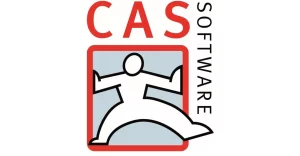Usually, Joachim Pawlik always opens the congress of his own company, Pawlik Consultants GmbH. His keynote or opening speech is about empathy, more precisely – what effect empathy already has today. Empathy as a management task binds employees and customers.
The team of Pawlik Consultants GmbH described the video as follows:
“Under the motto “The new empathy”, we ask about the interpersonal aspects of the new forms of work and postulate: Without the factor of empathy, success will not be possible in the future. But it is also clear that we have to redefine them. Because: How do we build proximity via a satellite connection? How do we feel cultural belonging when we don’t see each other? How do leaders build trust in their leadership skills if they themselves cannot foresee which path tomorrow will be the right one? And what exactly does the new generation expect in terms of empathy?”
Empathy as a leadership task binds employees and customers – My notes to the video:
In my opinion, however, empathy is not only an important skill in employee and project management.Of course, anyone who knows me knows what is coming now. It is an essential skill of a customer-oriented corporate culture. I am convinced that only those who anchor both in their culture can make the switch to a customer-oriented company. Empathetic leadership is a necessary condition for empathetic customer management. Or in other words, lovingly neglect the customer.
In his – as always worthwhile lecture – there are three focal points. First, it defines the term empathy. This is important because this is the point of reference for the following statements. Second, he brings examples of the importance of empathy in the future. Thirdly, he describes a few suggestions on how to meet these requirements.
I bring a few keywords from his lecture here, but they are only clues for fast readers. In principle, it is worth taking a look at the 30 minutes at a time. And then it’s best to take a cup of tea or coffee in your hand to write down various things:
- What do you take with you?
- Which of the impulses were new or already known?
- What are you changing about yourself?
- What are your next steps within the company?
Let’s briefly consider a few important excerpts
Pawlik once described empathy “popularly” as “the ability to empathize with other people.” This is followed by the scientific definition: there is a) cognitive sympathy and b) emotional empathy.
“Listening and understanding” is enough for cognitive empathy. Emotional empathy is not about having compassion and expressing it. It takes a congruence between words and deeds.
What creates empathy?
Empathy a) improves satisfaction and motivation, b) increases team performance and conversation participation, c) generates motivation and loyalty, d) strengthens creativity and willingness to learn, and f) optimizes collaboration and promotes MORE empathy.
Surprise? No, probably not.
Pawlik then adds some examples, e.g. sales successes occur when the sales employees act empathetically. I’ll add here: Not only in sales. 🙂
The greater the insecurity of people, the greater the desire for empathetic leadership
Security is important to existing employees. New employees opt for the culture and empathy of a company. The more stress, the less empathy there is.
The development towards more empathy and the increasingly complex situation of showing or expressing empathy makes it currently challenging – in the uncertain times.
Before Joachim Pawlik gets into the examples and suggestions, everyone – including you – is allowed to carry out a small task, a self-test. Incl.dem result, which is certainly surprising for a lot. For this reason alone, the video is worth watching.
To pass on the self-test result, Joachim Pawlik quotes the speaker from the previous evening, Mr. Kahnemann, who also told something about overconfidence of abilities. There are situations where overconfidence can be helpful, just not with empathy.
And now? Four ideas.
- It’s about the knowledge of “in-group” and “out-group”, as Tanja Singer has defined. She has examined fans of Bundesliga clubs with a test. As a result, empathy among like-minded people is intuitive and easy. Therefore, providing empathy towards the “out-group” people is much, much more difficult.
- Hyper Reading: The extreme growth of information we want or should absorb weakens our empathy abilities. Therefore, it is important to read requesting stories. Deep Reading. By the way: Non-fiction doesn’t help.
- Result Bringing: That doesn’t create empathy. It also needs conversations without cause. Not only conversations about project ends or project problems. As a result, time spending as a conscious introductory question means: “How are you?”. Leadership role.
- Small Talk versus Smart Talk. An experiment shows that in the beginning the hurdle of asking empathetic questions to others is more successful.
You can find out more about leadership management and “Empathy as a leadership task binds employees and customers” at
- the Leadership section on our portal
- in the Advent Calendar specially developed for Leadership Management
- or at Pawlik Consultants
Note: This is a machine translation. It is neither 100% complete nor 100% correct. We can therefore not guarantee the result.










 CAS Software AG ist Marktführer für Kundenbeziehungsmanagement (CRM) im deutschen Mittelstand. Ob Marketing, Vertrieb oder Service – Anwender profitieren von effizienten Prozessen auf einer einheitlichen Datenbasis.
CAS Software AG ist Marktführer für Kundenbeziehungsmanagement (CRM) im deutschen Mittelstand. Ob Marketing, Vertrieb oder Service – Anwender profitieren von effizienten Prozessen auf einer einheitlichen Datenbasis.





